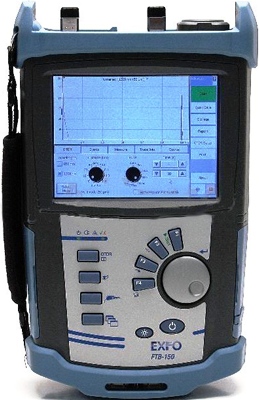
|
|
The Exfo FTB-150 Compact OTDR series is a lightweight OTDR that can house any of EXFO’s singlemode/multimode OTDR configurations designed to test at up to four wavelengths—choose from various combinations featuring the 850, 1300, 1310, 1490, 1550 and 1625 nm wavelengths—covering all fiber applications from long-haul and WDM to metro, FTTH and LAN networks. The FTB-150-QUAD and FTB-150-MM are designed for enterprise/private network test applications, the premises network OTDR comes in two configurations: four-wavelength or two-wavelength. 1 m event dead zone: shortest in the industry Attenuation dead zone starting at 3 m. Built for enterprise/private network OTDR testing. Four-wavelength model: two multimode wavelengths (850 and 1300 nm), and two singlemode wavelengths (1310 and 1550 nm). Two-wavelength model: 850 and 1300 nm (multimode). The FTB-150-FTTx configuration delivers triple-wavelength testing with a choice of wavelengths: 1310/1490/1550 nm, or 1310/1550/1625 nm. The FTB-150-QUAD Four-Wavelength Configuration combines singlemode and multimode test functionalities, the FTB-150-QUAD features four wavelengths—850, 1300, 1310 and 1550 nm. Designed for real-life applications, it easily characterizes the high reflectance of field-installed connectors. Its controlled launch conditions make for more accurate loss measurements. What’s more, it is optimized for testing both 50 mm and 62.5 mm multimode fiber. Thanks to great all-around specifications, EXFO’s FTB-150-QUAD provides pinpoint measurements—what you need for highly efficient multimode/singlemode OTDR performance. The FTB-150-METRO and FTB-150-LH configurations deliver accurate detection and analysis of fiber splices, connectors, breaks and other events along a fiber link. It lets you choose from dynamic ranges covering the greater distances in long-haul networks.
|